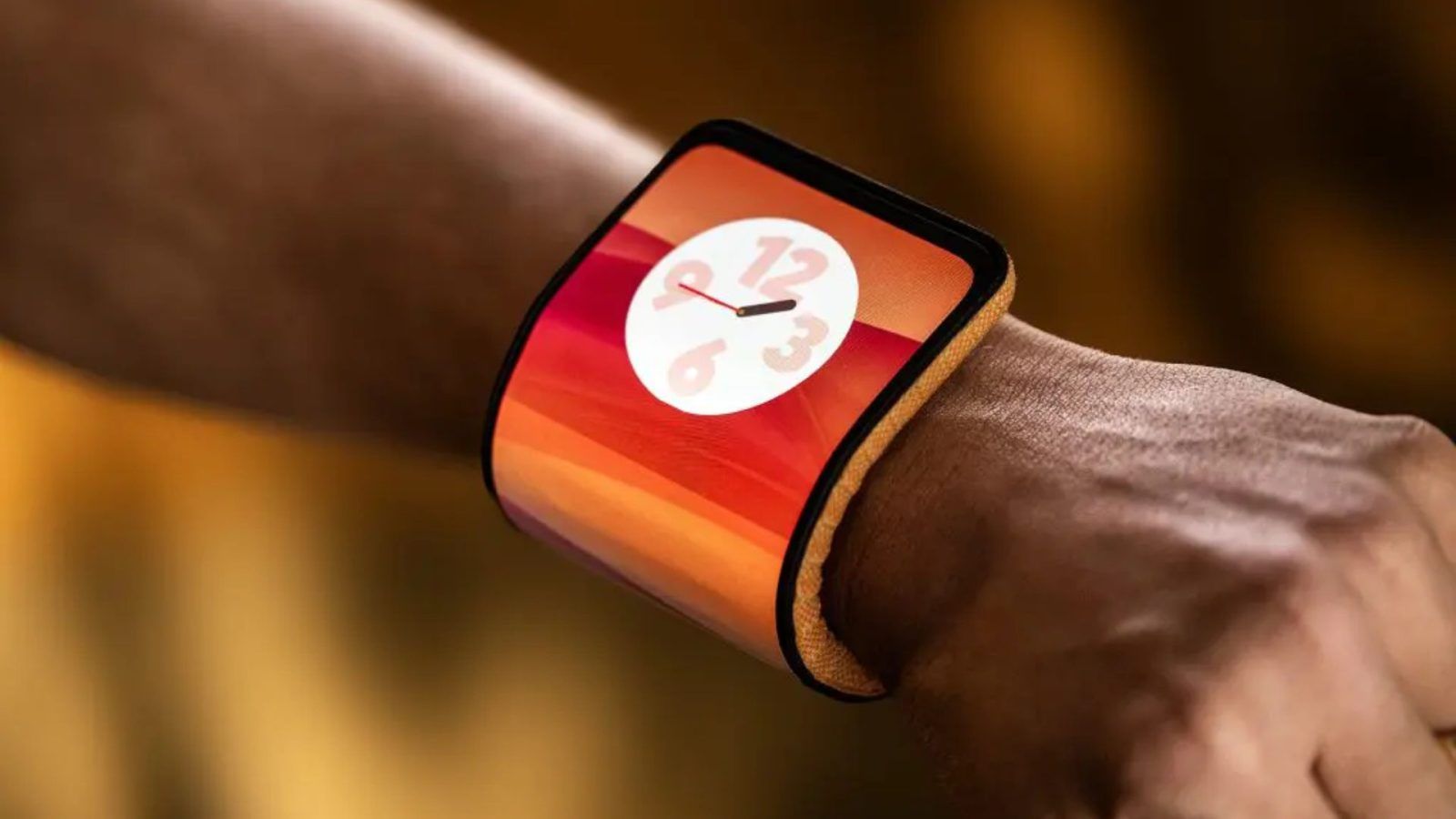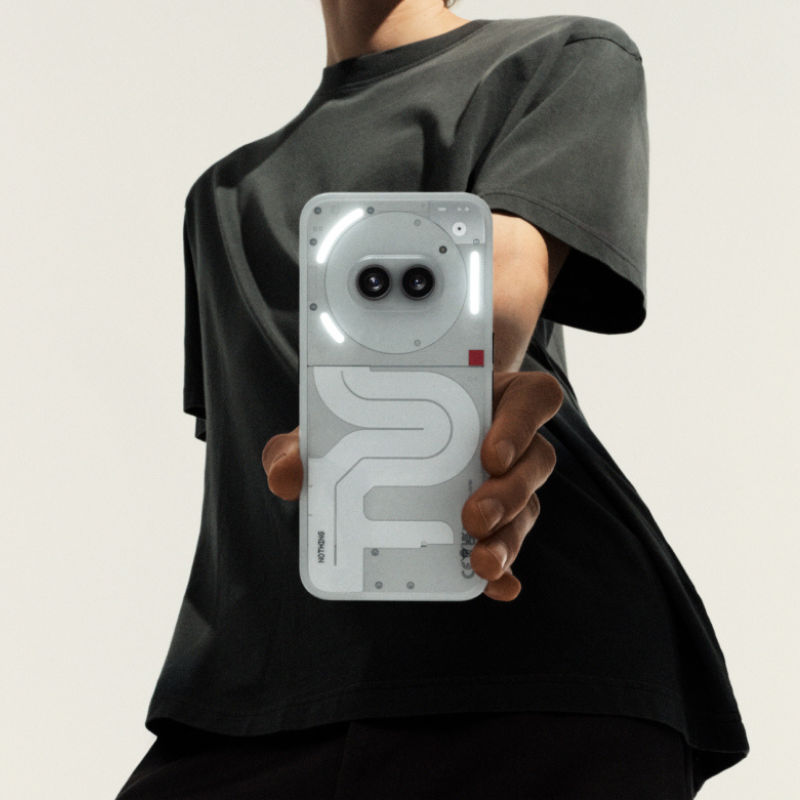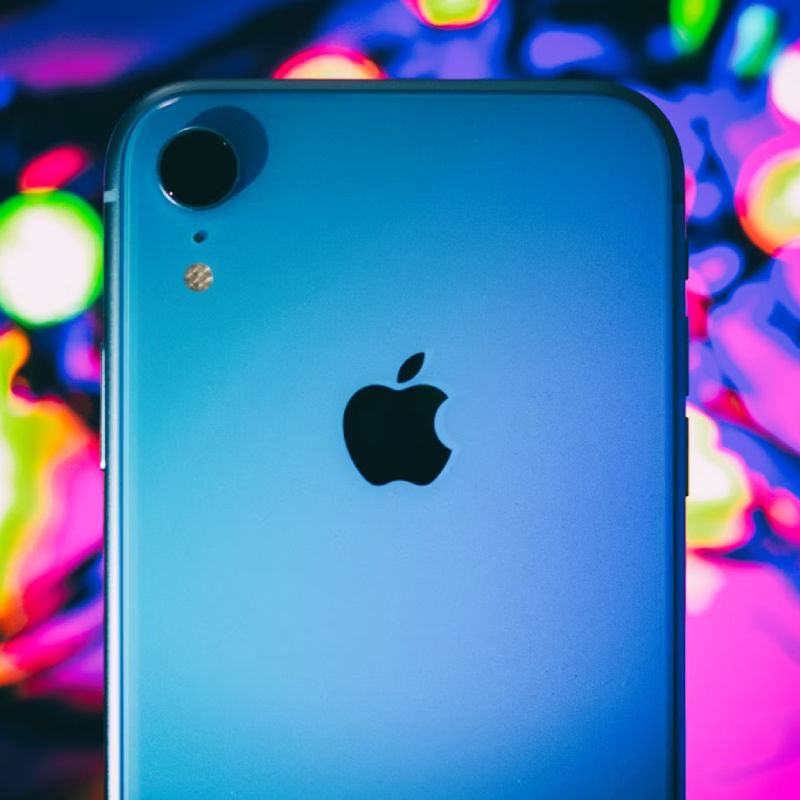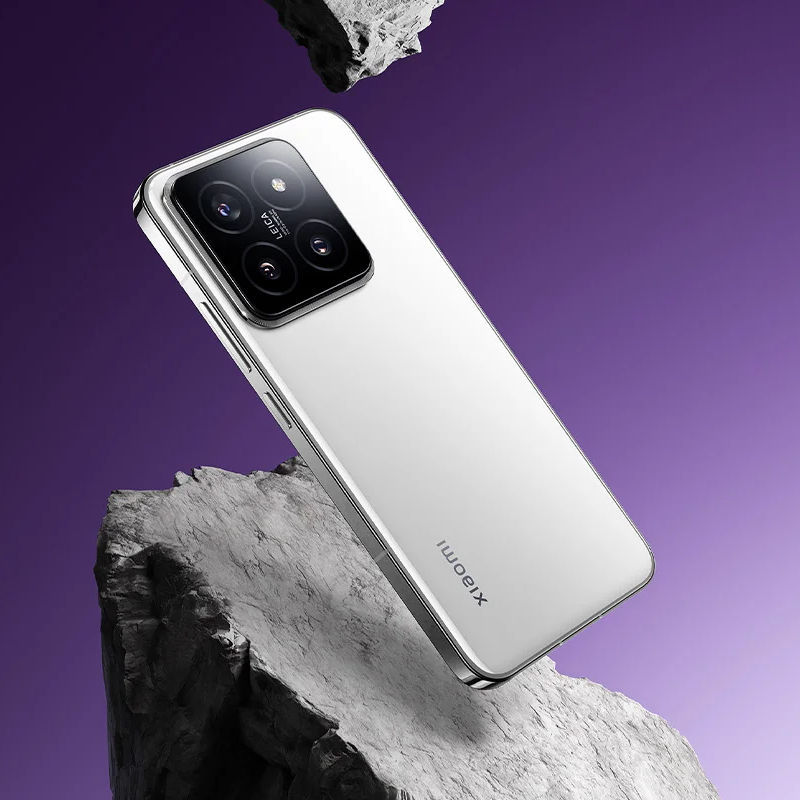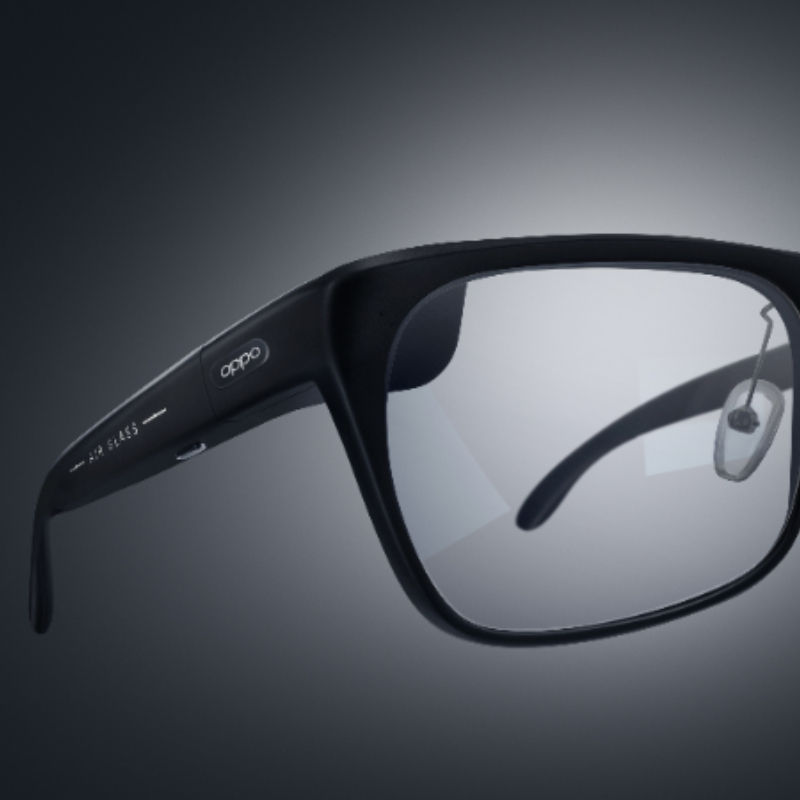The Adaptive Display concept by Motorola uses the folding display technology in an innovative way, bridging the gap with smartwatches.
Over the last few years, the flip and fold style smartphones have continued to break the monotony of an otherwise stale collection of generic smartphones that usually focus more on function than form. Devices like the Samsung Galaxy Z Flip and Motorola Razr 40 Ultra have considered the idea of having fun with a large cover display with cutesy watch faces and interactive widgets. In fact, the cover displays on these phones try to embody the function of a smartwatch and while that’s a cool idea to play with, it’s definitely not practical. The smartphone and the smartwatch still continue to be two separate entities. Well, it looks like that’s precisely what Motorola aims to change with its Adaptive Display concept.
Showcased at the Lenovo Tech World Event 2023, the Adaptive Display concept from Motorola revives the idea of a wearable that’s more than just a smartwatch with limited capabilities. We have seen a few examples of smartwatches in the past with massive screens and a crude Android interface trying to be a jack of all trades but master of none (remember the Nubia Alpha smartwatch?)
Motorola, however, is approaching the issue a bit differently with its Adaptive Display concept.
Does this concept preview the future of foldable devices? Well, without further ado, let’s explore what this Motorola Adaptive Display concept actually has to offer.
Adaptive Display from Motorola: What is it?
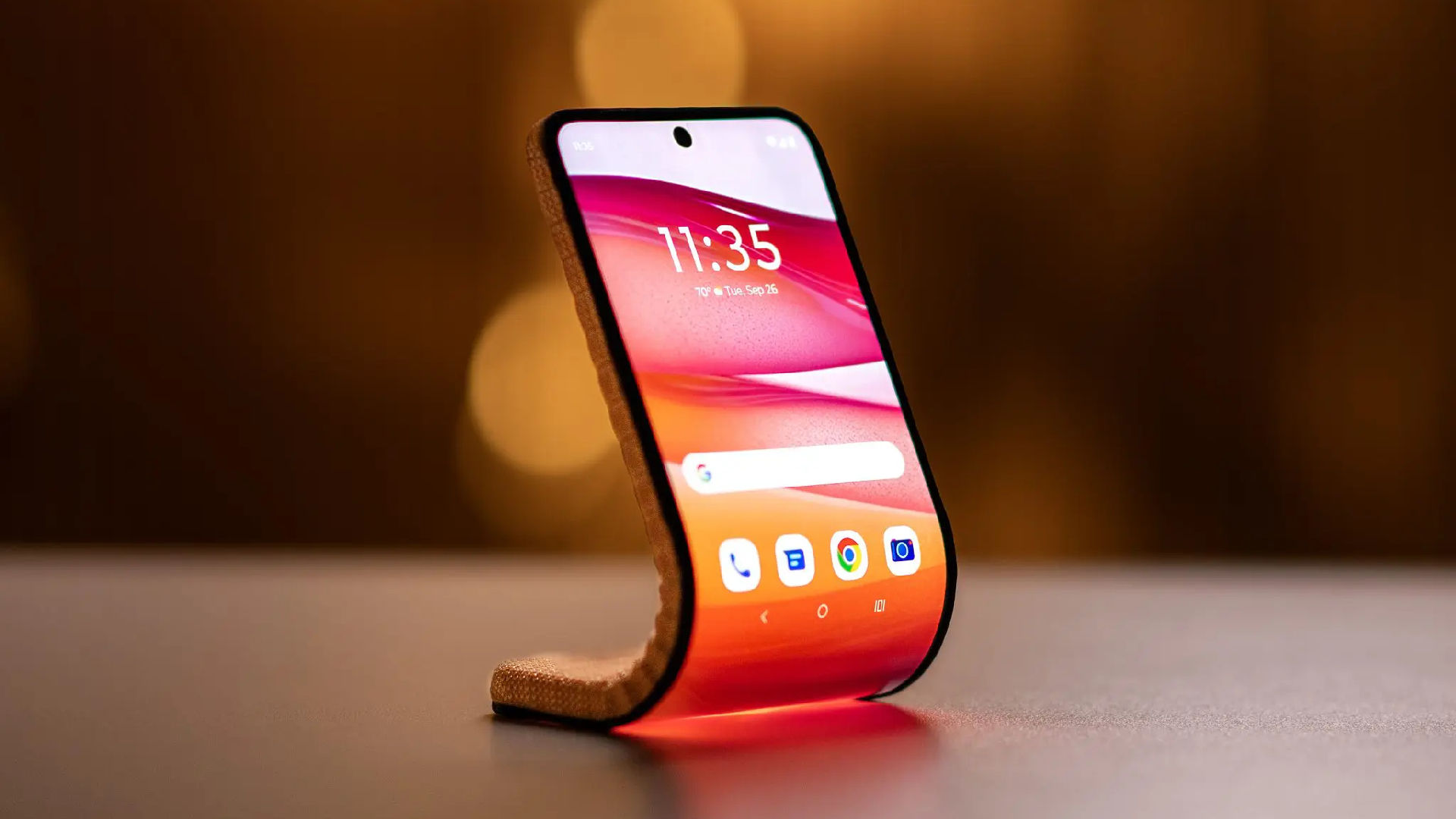
The Adaptive Display concept from Motorola is essentially an Android smartphone that can bend at extreme angles. Unlike the foldable smartphones of today that use a flexible OLED panel to bend from the centre, the Adaptive Display concept bends the display at multiple points, making it possible to wrap it around your wrist. Just like in flip smartphones, there is also a hinge system here that cleverly uses magnets to attach to a wearable cuff and hold it around the wrist. It essentially turns your smartphone into a smartwatch on demand. Isn’t that fascinating?
Think of those flexible slap wristbands but with a fully functional smartphone attached! And no, this isn’t the premise of a science fiction movie.
Motorola’s Adaptive Display’s specifications
Since the Adaptive Display concept is essentially a bendable phone from Motorola, there are some specifications we can talk about. This is essentially a 6.9-inch FHD flexible OLED display but there’s no light shed on the refresh rate and peak brightness.
Additionally, there’s no clarity on the kind of chipset that is powering this novel concept. However, the bendable phone form factor has allowed Motorola to design an adaptive Android UI that adjusts itself as per the folding angles. The homescreen clock widget ends up becoming the watch face when worn on the wrist. The UI also changes orientation when viewed upside down.
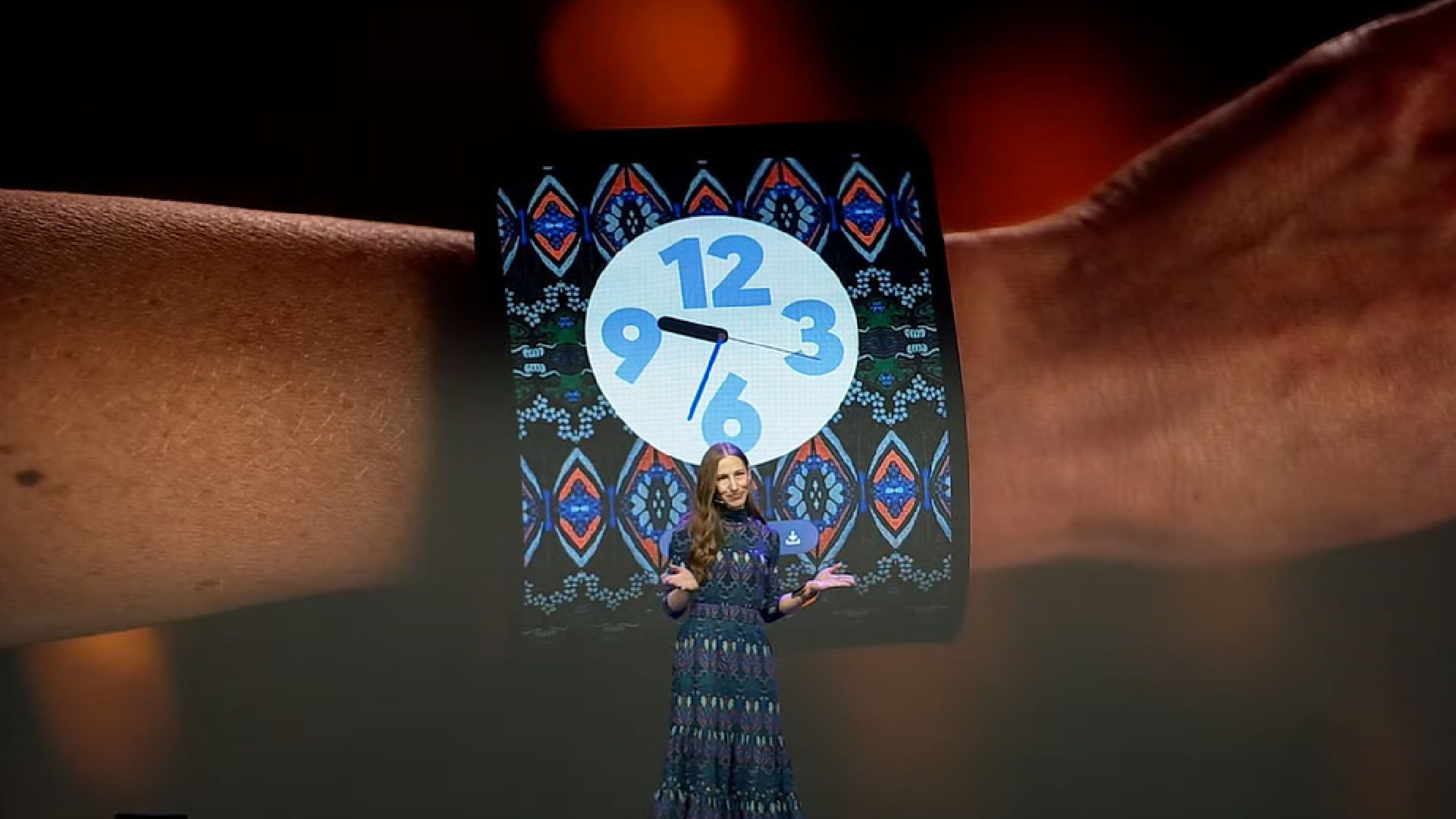
Motorola says that you can fold the display halfway to make it stand upright on its own, providing for a more compact 4.6-inch display. When you are in the mood to wear it on your wrist, the device becomes a compact display that offers an experience comparable to the Motorola Razr 40 Ultra’s cover display.
Unlike a conventional/foldable smartphone, there’s no camera at the back and that means there’s no way to take a photo conventionally. You may have to rely on the front camera entirely to take a photo or record videos. That seems impractical but you have to remember that this is just a concept device.
Will this adaptive display concept pave the way for innovative Android devices?
Android has allowed innovative concepts to flourish over the years. It is the only mobile operating system that’s designed keeping in mind the flexible form factors and large-screen devices. As more manufacturers get interested in flip-style smartphones, a concept like this could urge a new wave of innovation. The Adaptive Display concept has shown a novel idea to bridge the gap between a smartphone and a smartwatch and we wish Motorola’s R&D team could figure out a way to bring this concept to life.
(Hero and Featured Image Credits: Courtesy Motorola)
The story originally appeared in AugustMan India

